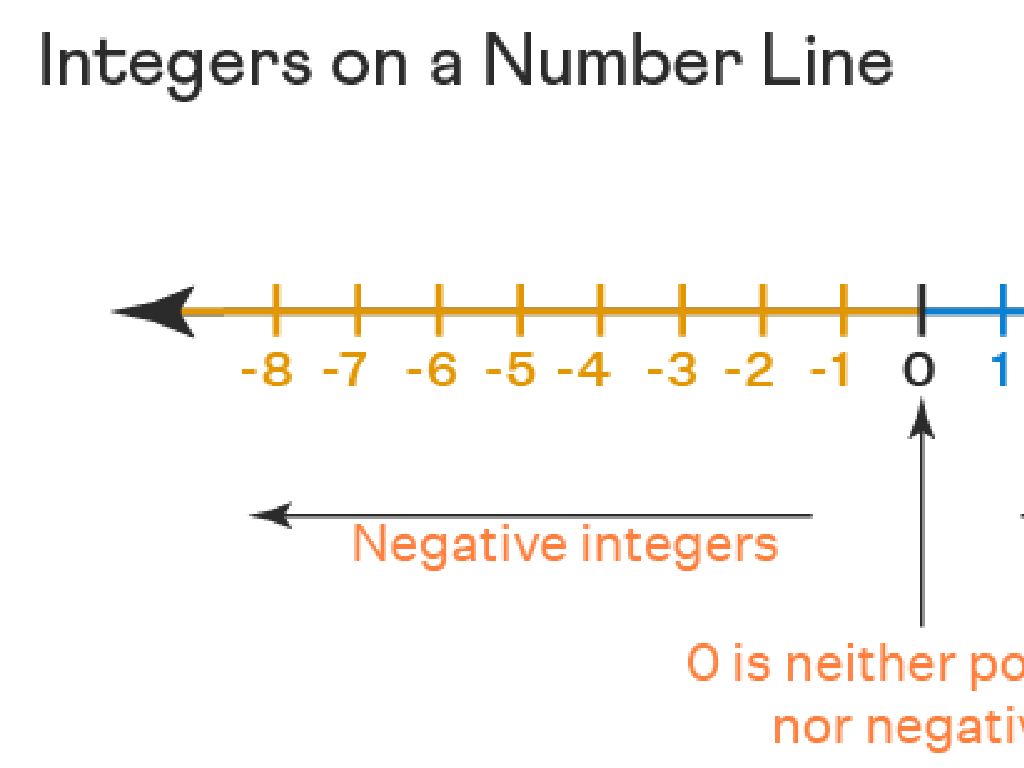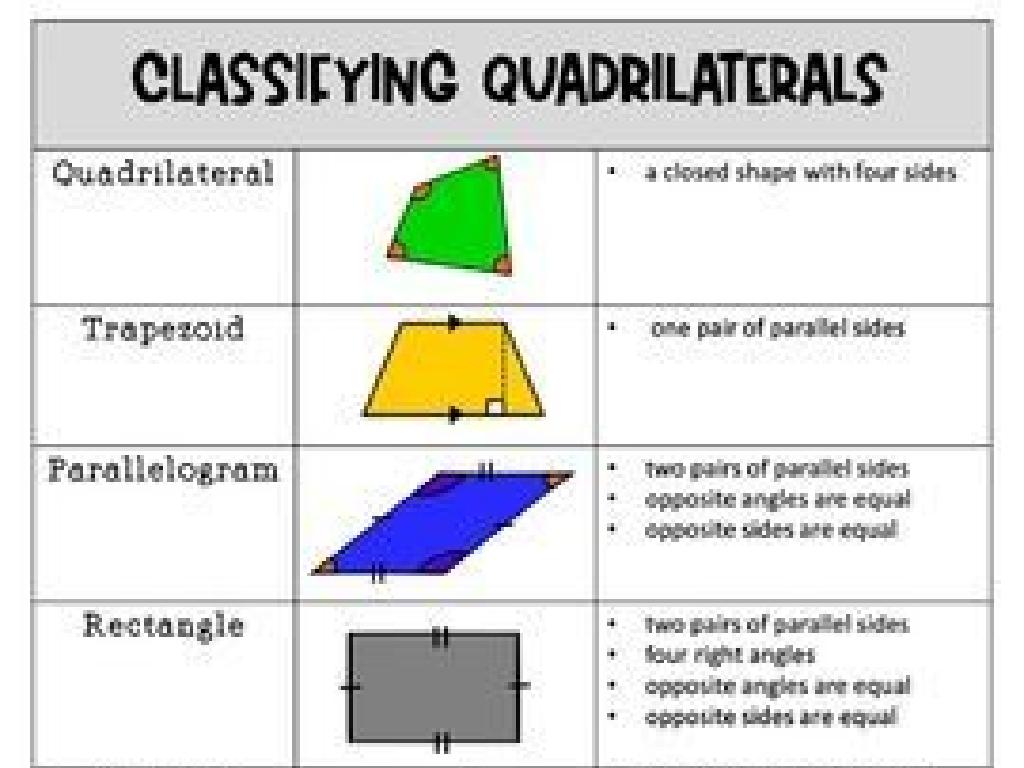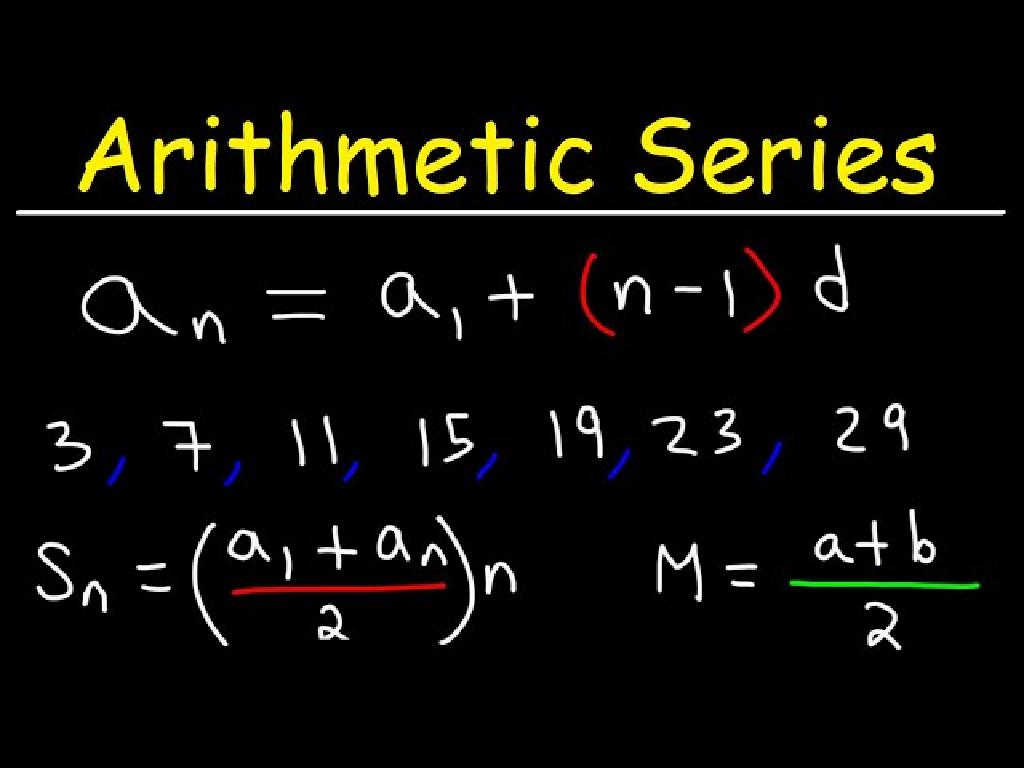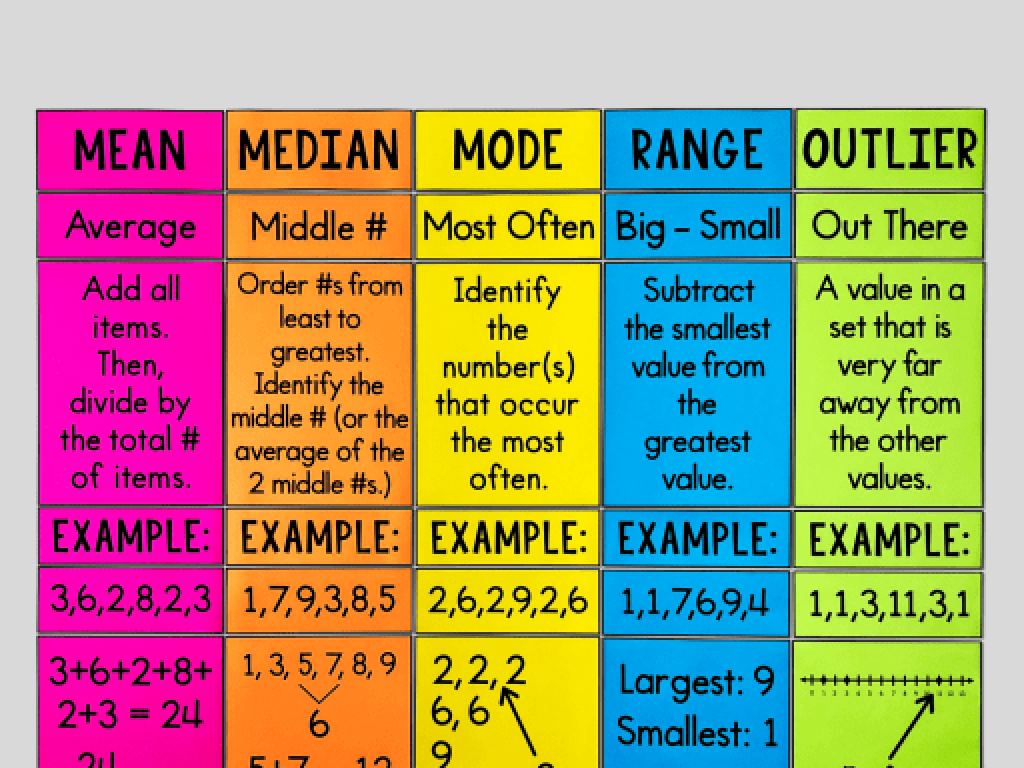Select The Members Of A Group
Subject: Language arts
Grade: Third grade
Topic: Categories
Please LOG IN to download the presentation. Access is available to registered users only.
View More Content
Exploring Categories
– What are categories?
– Groups with shared characteristics, like fruits or shapes
– The usefulness of categories
– They help us organize thoughts and understand the world
– Categories in everyday life
– Food types, clothing, animals, colors
– Activity: Grouping objects
– Let’s sort items into their correct categories together!
|
This slide introduces the concept of categories to third-grade students. Begin by explaining that categories are groups of things that have something in common, such as fruits or shapes. Discuss how categorizing helps us to organize our thoughts and make sense of the world around us. Provide relatable examples that children encounter daily, like different types of food, clothing items, animals, and colors. Conclude with an interactive class activity where students will practice grouping objects into their correct categories. This will help reinforce the concept and allow students to apply what they’ve learned in a fun, engaging way.
Understanding Groups and Categories
– What defines a group?
– A group is a collection of items with something in common.
– Identifying group members
– Look for shared characteristics to find who belongs.
– Grouping by similarities
– Items in a group should have at least one similarity.
– Practice with examples
– Let’s sort fruits by color or animals by habitat.
|
This slide introduces the concept of groups and categories, which is fundamental in organizing information. Start by explaining that a group is made up of items that share common features. Teach students how to identify which members belong to a group by looking for these shared characteristics. Emphasize the importance of grouping items based on similarities, such as color, shape, size, or function. Provide hands-on practice by having students group different sets of items, like fruits by color or animals by the type of environment they live in. This activity will help solidify their understanding of the concept.
Group Selection: Finding the Odd One Out
– Learn rules for group selection
– Activity: Spot the odd member
– Find the item that doesn’t match the others in a list
– Discuss why some don’t fit
– Share reasons why the item is different
– Understanding categories
– Learn how to categorize items based on similarities
|
This slide introduces the concept of categorization by selecting members of a group and identifying which items don’t belong. Start by explaining the rules for how to group items based on common characteristics. The activity will involve students identifying the item that doesn’t fit with the rest in a given list. After the activity, lead a discussion on why certain items were the odd ones out, reinforcing the concept of categories and similarities. For the activity, consider using examples like a list of animals where one is a fruit, or a list of shapes with one color. Encourage students to explain their reasoning, fostering critical thinking and observation skills.
Understanding Categories in Language Arts
– Categories organize thoughts
– Like sorting books in a library helps us find them faster
– Sort words by common features
– For example, ‘apple’ and ‘banana’ can be sorted into ‘fruits’
– Categories improve story comprehension
– Understanding characters’ actions by grouping their traits
– Practice categorizing words
|
This slide introduces the concept of categories in Language Arts and how they can be a powerful tool for third graders to enhance their reading and writing skills. By organizing words and ideas into categories, students can better understand and retain information. Sorting words into categories based on common features helps with vocabulary development. When reading stories, categorizing information about characters, settings, and events can lead to a deeper understanding of the narrative. Encourage students to practice categorizing words from their favorite stories or from a list provided. This activity can be a fun and interactive way to solidify their understanding of the concept.
Class Activity: Create Your Own Categories
– Let’s make categories together!
– Work in teams to sort classroom items
– Decide how to group the items
– Think about what items have in common
– Share your categories with everyone
– Explain why you chose those groups
|
In this interactive class activity, students will engage in hands-on learning by creating their own categories using objects found in the classroom. Divide the class into small groups and instruct them to collect various items. Each group will then discuss and decide on how to categorize the items based on common characteristics or themes. After sorting, each group will present their categories to the class, explaining their reasoning. This activity encourages teamwork, critical thinking, and public speaking skills. Possible categories could be based on color, shape, size, or function. For example, one group might categorize items that are used for writing, while another group might sort items by their color or material.
Conclusion: Understanding Categories
– Recap: Learning about categories
– Importance of grouping items
– Grouping helps us organize & find patterns
– Quick quiz on group members
– Test your knowledge with a fun quiz!
– Reflect on today’s lesson
– Think about how we use categories daily
|
As we wrap up today’s lesson, it’s important to review the concept of categories and why they are useful. Grouping items into categories helps us to organize our thoughts and understand the world around us. It also makes it easier to find patterns and similarities between different things. To ensure the students have grasped the concept, we’ll conduct a quick quiz. This will not only reinforce their learning but also make the lesson memorable. Encourage the students to think about how they naturally group things in their everyday life and share examples. This reflection will help solidify their understanding of the importance of categories.






